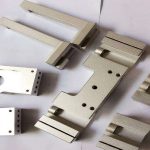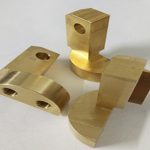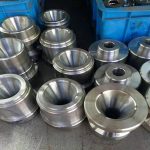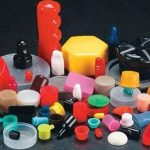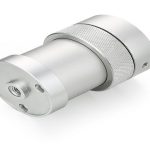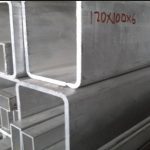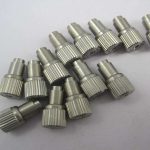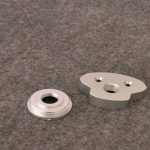When I started my career in metal finishing in the mid-1980s, the industry thought about its source and development direction. It is interesting to look back at the time and remember all the changes that have occurred since we entered the 1990s. Environmental issues dominate the industry.
I especially remember that the market is flooded with new technologies and new equipment to deal with environmental issues related to the electroplating process. It was followed by the development of electroplating technology, which solved the global concern about air and water pollution related to the scrap of electroplating products. The challenge for professional chemical formulators is to develop environmentally friendly processes that can meet the requirements of corrosion-resistant finishes.
For now, the entire industry has been very adaptable, and can provide OEMs in various industries with finishes that meet strict environmental standards, while also meeting extremely challenging corrosion resistance requirements.
It can be said that in recent years, zinc and zinc-nickel coatings have paid the most attention to new and improved technologies for electroplating post-treatment. The automotive industry is the driving force of new developments. Accelerated corrosion tests, such as salt spray test, mud test, gravel road test, temperature and humidity test, etc., all try to simulate real conditions to provide the company with a performance barometer to measure the improvement of its corrosion performance.
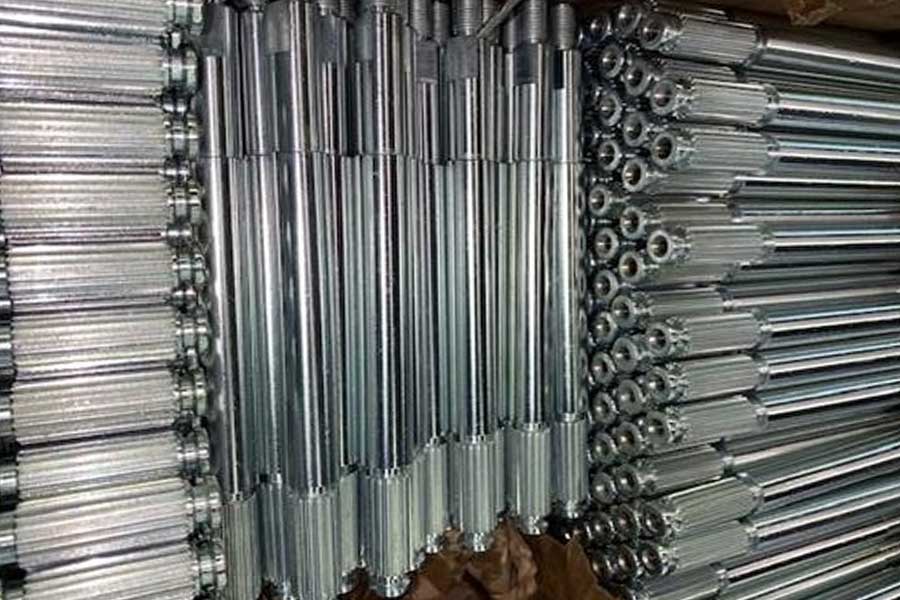
Galvanized
In addition to the thickness of the zinc plating, post-treatment must be performed to provide enhanced corrosion resistance. Choose the surface treatment according to the customer’s requirements.
Chromate (passivation)
In ordinary conversation, the terms chromate and passivator can be used interchangeably despite technical differences. Chromate is a conversion coating in which hexavalent chromium reacts with the zinc coating to convert it into a protective coating. Driven by the removal of hexavalent chromium from the production process and final parts, passivators were developed. The pH value of the trivalent passivator is very low, usually between 1.8 and 2.5. Passivators are complex chemical processes that include metals, accelerators, oxidants and complexing agents. Trivalent passivating agents can be divided into two categories: thin film and thick film.
Asterisk alkaline zinc with trivalent passivator and organic sealing for complex stamping parts. Source | Starry Sky
It is specified that the trivalent thin film passivator can provide a thin trivalent chromium coating on the galvanized surface. Sometimes cobalt is added to passivator formulations to provide additional corrosion resistance. European policy banned the use of cobalt, leading to the latest development of new cobalt-free alternatives. Corrosion resistance depends on several factors in the production process, such as the effectiveness of the nitric acid brightening solution before the passivation process, the concentration of the passivation process, pH, the time during the process, bath temperature, quality, etc. Coating deposits, the content of impurities in the passivation solution, the cleanliness of the washing tank and the successful drying of the parts. Thin film passivators generally operate at ambient temperatures and deposit significantly thinner coatings than thick film products. The thickness of the passivation film ranges from 1 micrometer or more.
Generally, thin film passivation layers have a bluer appearance than thick film passivation layers.
Thick film passivators are usually heated and contain higher concentrations of metal salts. Due to their thickness, these passivators generally provide higher corrosion resistance at a lower cost, because no other materials are required to meet performance requirements.
Large-capacity barrel operation with Asterion alkaline zinc-nickel system. These parts have a uniform distribution and high projection ability. Photo courtesy of Wisconsin Electroplating Factory (Racine, Wisconsin)
Zinc nickel plating
There are several obvious differences in the post-treatment application of zinc-nickel coatings. After the coating is deposited and before the passivation process, a non-oxidizing acid is used to activate the surface.
Passivation
Although the zinc-nickel coating has high corrosion resistance during electroplating, it is recommended to use a passivation agent to add an additional protective layer to help reduce the generation of white corrosion products. Typical zinc-nickel passivators can produce a transparent blue or black surface. In some cases, the transparent light blue finish needs to be treated with a subsequent sealant to enhance corrosion resistance. The black passivator is almost always subsequently treated with the finished sealant to improve the functional and aesthetic properties of the coating. The pH value of the passivation solution is usually between 3.0 and 4.0 to obtain a transparent blue finish; between 2.0 and 2.5 to produce a black finish. The recommended passivation process for zinc nickel is a thin film formulation.
Sealer
If the specified zinc or zinc-nickel coating requires corrosion protection beyond the ability of the passivator, additional processing is required. A transparent sealant is specified to meet the need for increased corrosion protection. Usually, zinc finishes specify a sealant to enhance corrosion protection to meet the requirements of strict accelerated corrosion testing.
Silicate sealants have been on the market for many years and are considered to be very reliable as transparent topcoats on passivated surfaces. The additional corrosion protection provided by these sealants and the protection provided by passivators, as well as the lower operating costs, make these types of sealants a popular choice. The silicate sealant is characterized by an amorphous glass coating, which can “seal” the passivation film very effectively. Silicate sealants do have a tendency to reduce the blue tint of blue passivators, resulting in almost transparent films. This process is the final process after passivation (and rinse after passivation). This process is usually heated in a water tank. It should be noted that if the part needs to be baked for hydrogen embrittlement, a silicate sealant should be used after the baking cycle.
Organic nanoparticle sealant is the latest innovation in sealant technology. This unique process can be used in a single tank at the end of the production line before drying. The process does not require heating and can be operated at a weakly alkaline pH. Baking after the board is acceptable. The transparent film produced by the sealant has self-healing properties (similar to hexavalent chromate) and has a high modulus of elasticity, which is required for crimped parts after electroplating. Another novel advantage of this sealing machine is its powerful ability to tolerate the presence of impurities dragged into the passivation tank, for example on automatic high-capacity machines.
Nano additives can passivate the plating solution
In addition to using nanoparticle technology in combination with organic sealants, another way to improve corrosion performance is to add special nanoparticles in the passivation tank. These nanoparticles are incorporated into the passivation film, thereby improving wear resistance and corrosion performance. When the nanoparticle passivator closely follows the organic nanoparticle sealant, its performance may exceed traditional standards. It should be noted that nanoparticles are not considered as sealants, but they can be added to the passivation process to improve passivation performance. If space constraints prohibit the use of a separate sealed tank, this is a very feasible option, but the specifications of the part require enhanced corrosion protection. Nanoparticle technology has a wide range of uses and can be used in thin film and thick film formulations. If tank space is available, adding nano-particle passivation tanks and using the final nano-particle sealant can provide significant corrosion protection on the galvanized surface. Most nanoparticle processes will not be adversely affected by post-processing baking.
Proprietary chemical suppliers continue to look to the future to provide corrosion-resistant technologies that can meet increasingly stringent environmental requirements and meet the requirements for improved corrosion resistance. As the Greek philosopher Heraclitus said: “The only thing that can be determined is change.” Be ready to respond to changing needs and work with your proprietary chemical suppliers to meet the ever-changing metal finishing market Needs to maintain a leading position.
Link to this article: What should be paid attention to in the process of electro-galvanizing and nickel-plating?
Reprint Statement: If there are no special instructions, all articles on this site are original. Please indicate the source for reprinting:https://www.cncmachiningptj.com/,thanks!
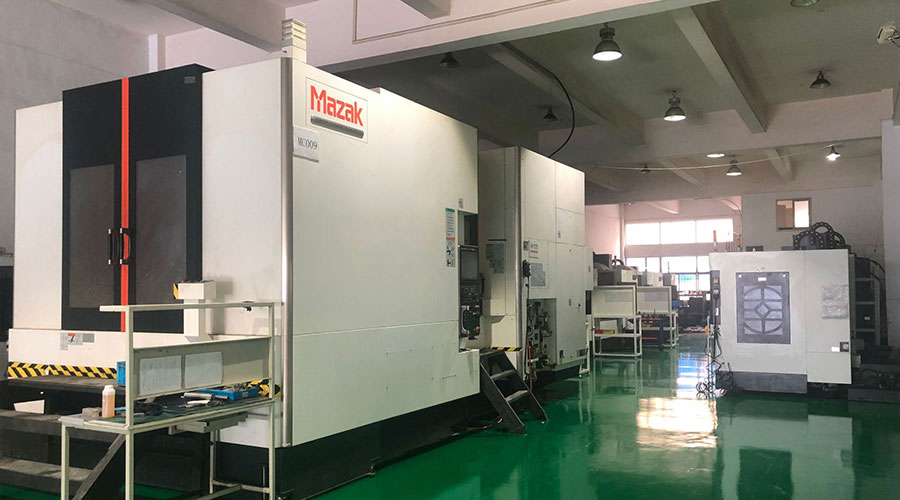 Sheet metal, beryllium, carbon steel, magnesium, 3D printing, precision CNC machining services for heavy equipment, construction, agriculture and hydraulic industries. Suitable for plastics and rare alloys machining. It can turn parts up to 15.7 inches in diameter. Processes include swiss machining,broaching, turning, milling, boring and threading. It also provides metal polishing, painting, surface grinding and shaft straightening services. The production range is up to 50,000 pieces. Suitable for screw, coupling, bearing, pump, gearbox housing, drum dryer and rotary feed valve applications.PTJ will strategize with you to provide the most cost-effective services to help you reach your target,Welcome to Contact us ( [email protected] ) directly for your new project.
Sheet metal, beryllium, carbon steel, magnesium, 3D printing, precision CNC machining services for heavy equipment, construction, agriculture and hydraulic industries. Suitable for plastics and rare alloys machining. It can turn parts up to 15.7 inches in diameter. Processes include swiss machining,broaching, turning, milling, boring and threading. It also provides metal polishing, painting, surface grinding and shaft straightening services. The production range is up to 50,000 pieces. Suitable for screw, coupling, bearing, pump, gearbox housing, drum dryer and rotary feed valve applications.PTJ will strategize with you to provide the most cost-effective services to help you reach your target,Welcome to Contact us ( [email protected] ) directly for your new project.
Link to this article:What should be paid attention to in the process of electro-galvanizing and nickel-plating?
Reprint Statement: If there are no special instructions, all articles on this site are original. Please indicate the source for reprinting:Tungusten,Thanks!^^

